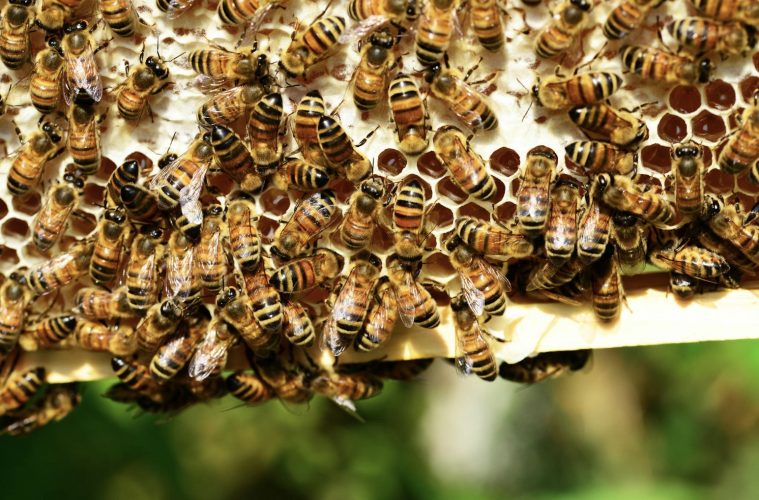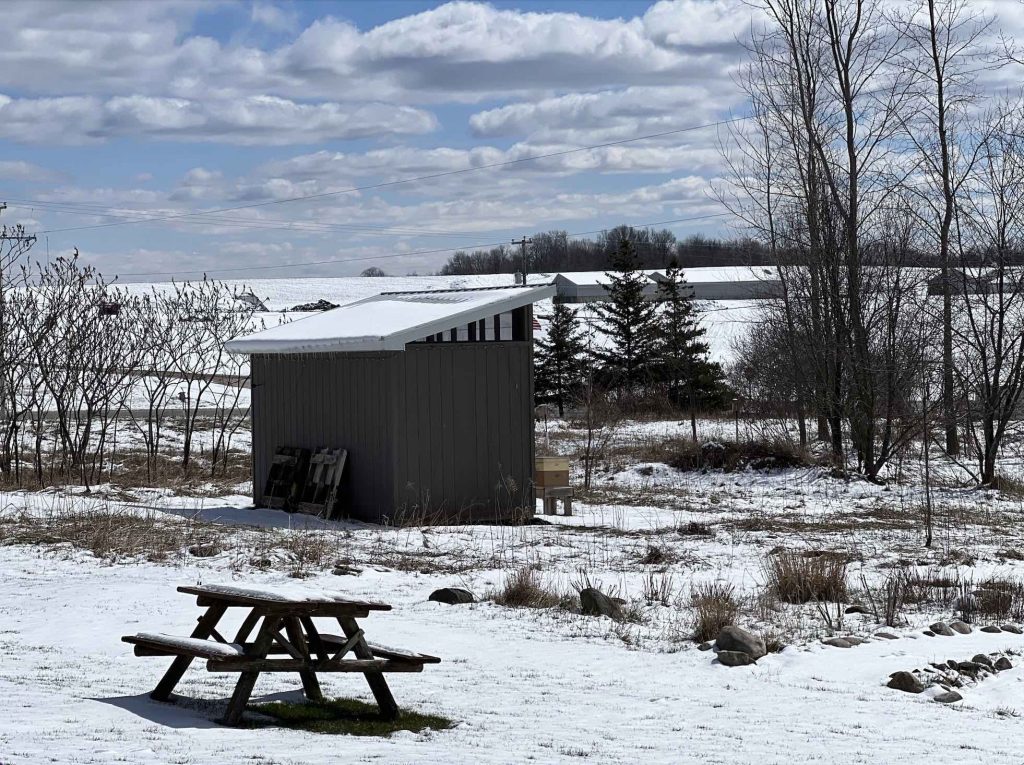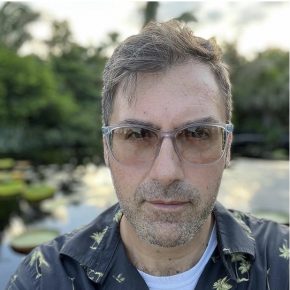As someone who enjoys gardening, I have a deep appreciation for bees and all that they do to help make my flowers bloom. Granted, they’re not the only creatures that are making the magic happen, but they definitely seem to be the universal symbol for pollination. Even more than being associated with pollination, bees are deeply linked in our minds to honey.
When I was a child, the idea of bees was synonymous with the idea of honey. No doubt because of cartoons, bees were always associated with that wonderfully sweet goop that I absolutely loved, and still do, on top of my peanut butter. Side note, my mother would always put the honey in the fridge for some reason, which would basically make it unusable as soon as it was chilled. Because of this, we would indulge ourselves in this sweet treat as soon as she returned from the grocery store with a new batch. We learned that this was really our only time to enjoy it. I still find this funny because honey is literally the one food item that doesn’t spoil. It has been found buried in ancient Egyptian tombs and is still by all accounts, edible.
When I got older, I of course realized that there were different types of bees but it wasn’t until I was taking my course to be certified as an MSU Extension Master Gardener that I learned there were thousands of bees native to our country; with no fewer than four hundred and fifty native to Michigan. Interestingly, not a single one of these bees produces honey. Honey bees were first brought to Virginia in 1622 from Europe. By 1776 they had made their way to Michigan, and we’ve been enjoying peanut butter and honey sandwiches ever since.
Recently, my editor contacted me with an interesting opportunity. He wanted me to drive out to Fremont on the west side of the state and take a beekeeping class put on by the Great Lakes Bee Company. My initial thought was one of excitement. I envisioned myself suited up in that iconic beekeeping outfit, consisting of the net hat and big gloves, standing over a bustling hive holding a little contraption that blows smoke and learning the ins and outs of the ancient practice of apiculture. I of course bravely accepted this challenge.

Pastoral or Bucolic Scene from the Road?
Getting There
Although we had been experiencing unusually warm weather we took a sudden cold turn recently, and the day before I was to head out to the lesson the snow decided to fall. This started to put a damper on what I thought was going to occur during my visit. Were the bees even going to be out and about? Maybe they had some sort of indoor facility with bee filled hives to learn from? Was virtual reality a possibility?
For some reason, I was under the impression that Fremont was about an hour and half from me. This was grossly incorrect. A couple of days before my trip, I realized that it was in fact over three hours away. With the class starting at 9 am, I calculated that I would need to wake up 4:30 in order to get my morning routine out of the way and get on the road. I am by nature an early riser but 4:30 is a little earlier than I am used to. Having quit coffee and other caffeinated beverages over a year ago, I wasn’t sure how this would go.
Dozing off around 9:30, my dreams revolved around the theme that I needed to get up for my 4:30 alarm and get to the class. One of the more surreal involved my brother taking me to an underground garage in the middle of the night that was elaborately decorated for Christmas. I thought it was equally beautiful and tacky, seeing that it was late March. I kept reminding him of my early rise time and how we needed to leave this lighted wonderland so that I would get enough sleep for my journey.
The alarm finally went off and I awoke, eager to get on the road. After getting all my morning business done, I ventured out into the cold dark and made my way onto the highway. These are the moments I am grateful for car seat warmers.
I quickly realized that there is a lack of adequate lighting along many parts of 696 and 96. Also, the never-ending construction that forces you to drive on what were clearly shoulders before the work began are somehow way worse at this time of day. There really isn’t a good reason to be driving on the highway at 5 in the morning on a Saturday.
I felt alone with my thoughts, which was a weird juxtaposition of pleasant and terrifying. There’s a lot of stuff rattling around in there. I usually keep it at bay, but moments like this are designed to bring it all to the forefront. When I was younger, I used to go on long road trips by myself and would revel in the opportunity to be alone with my thoughts. These days, I desperately try to keep myself busy so as to not entertain all the middle-aged anxiety that now rolls around inside my head. This dark introspection seemed to last forever, but the clock said that it had only been around two hours. Then things started getting interesting.
For some reason, I can’t recall ever seeing the Moon setting in the same ethereal way that I observed it to do that morning. It was mammoth and ochre, and I felt as if I was seeing it for the first time. A part of my brain couldn’t quite grasp what it was that I was even witnessing. It was certainly the most beautiful thing that I have beheld in a very long time. As it sunk further away from my sight, the day around me began to emerge, and I was enthused to see that the previous days snowfall had coated everything in a glorious blanket of pristine whiteness. This coincided perfectly with the last hour of my journey, that took me off the highway and onto a series of small country roads.
A couple of years ago, my wife and I were driving through a rural area and wondering if it was bucolic or pastoral. After some googling, we decided that one meant rural, and one specifically had to do with farms. After looking it up again as I write this, it seems that they are basically synonymous. Either way, the last hour of my drive was definitely that. You can feel free to insert bucolic or pastoral. I’m going to go with pastoral because bucolic sort of sounds like a disease to me and the scenery was definitely the opposite of diseased. Well, not exactly the opposite, just beautiful.
As I entered the town of Freemont, I couldn’t help but feel how much it was quintessentially Michigan. I drove through the blink or you’ll miss it downtown stretch that I’ve driven in countless other small towns around the state. Storefronts seemed frozen in time, even though the historical signs no longer represented what was actually housed inside its structure. An old hardware store might now be home to a juice bar, but the connection to the past still remains in the fading paint of the typography.
- A Hive Peeking Around the Corner on Kropscott Farm | Dado
Beeing There
The class wasn’t at the official location of the Great Lakes Bee Company. In fact, as I was to learn later, they were in between official locations and ready to move into a new headquarters located in that quaint strip of downtown that I had just sped past. My actual destination was the Kropscott Farm Environmental Center. This charming collection of farm buildings sat in the middle of some of the most gorgeous countryside views that I have been witness to for quite some time. Of course, I have been just emerging from a southeastern Michigan winter and it probably wouldn’t have taken much to impress me. Apparently, the facility is used for various science-based programs in the area. Today it was being used to teach people about beekeeping.
As I entered the main building, I was greeted by Stefan Braun, who it turned out is the general manager of the company and my instructor for the day. I was handed the book The Backyard Beekeeper by Kim Flottum, and an additional Beekeeping Basics packet by Stefan. Along with these, I was handed a little box, that I for some reason immediately assumed contained honey, and was welcomed to go into the next room where the class would be held.
Entering the next room, my heart sunk a little. What awaited me was a screen set up for a slide presentation, with seats and tables in front of it. At this moment, I realized that what I had driven out for was not going to be a hands-on introduction to the art of beekeeping but rather a presentation on the art of beekeeping. My expectations of the day were grossly overexaggerated. In all fairness, I don’t know what I was thinking. If the class had been in late April or May, then my initial imaginings of how everything was going to play out would have been more realistic. I decided to sit down and try and squash any disappointment that I was feeling and make the most out of the experience. After all, I was here to learn.
As everyone slowly piled in, I took a look through my reading material. The book was a very nice softcover textbook that gave me the feeling that I was back in college on the first day of class. Amongst its 200 some pages of informative text lay many nice photos and diagrams that help explain everything one would need to know about how to care for honeybees and get the most out of your investment in time and money. The additional packet turned out to be a very nice addendum to the book, offering up Stefan’s seven years of teaching knowledge on the subject.
When the last of the group took their seats, Stefan began his presentation. After a brief introduction, he asked if we had yet opened our small boxes. To my surprise, I hadn’t; which, is strange, because I was never clued in on what was actually inside of the taped-up package and normally such a mystery would have felt overwhelming. I tore the tape off and unboxed what turned out to be a miniature model of a beekeeping hive. I was immediately enthused over this, as I love a good miniature. As I soon learned, the boxes of the hive consisted of the “brood chamber”, where the Queen lives and the bees are born and raised, and the “supers”, which are extra boxes positioned on top. The frames hanging inside are called “nucs”, where the bees end up building nucleus colonies. With the miniature hive placed in front of me, I was ready to learn all about the honeybees.
Stefan turned out to be a very affable teacher and made the time fly. He made it quite clear from the beginning that keeping bees would result in getting stung quite often. He said that he gets stung on average 50 times a year. He explained that although he wears the protective headgear, he doesn’t usually wear the gloves. I could imagine that they would be bulky and thus difficult to handle things. At this point, a retired doctor in the group informed the class that bee sting therapy was still widely used in the treatment of arthritis. So, I guess it’s a positive thing? It became clear during the presentation that many things the beekeeper does to the bees ends up making them angry, explaining the large amount of stinging involved. His main advice regarding the stinging was to get the stinger out as soon as possible.
One of the controversial aspects about beekeeping (and there are several) that I have come across is the notion that when you harvest honey from the hive, you essentially starve the bees during the winter. I was happy to learn during the course of the day that this is not the method of the responsible beekeeper. Each hive of bees needs between 60-100 pounds of honey to get through the winter. This is accomplished in the space of two supers filled with honeycombed nucs. Once these are filled, additional supers and nucs are placed on top and those are soon filled as well. Stefan asserts that bees are naturally overachievers and will produce much more honey than they need to get through the winter. On average, using this method will supply you with 50-100 pounds od excess honey to harvest per hive!
That’s a lot of honey!
Way to go bees!
Probably, the most interesting conversation that developed in the class was the problem of bears getting at your hives and how best to deter them. Apparently, there is no real way to stop them completely, outside of killing them, but they can be deterred by an electric fence with a minimum of one joule of current. I found this to be a somewhat exotic problem to encounter. I live in Berkley, and apart from our high school mascot, we do not have a bear problem.
One of the best pieces of advice that Stefan stressed on more than one occasion was to find a local bee club to find a mentor and resources. It turns out that there are clubs all over the state with five in and around the Detroit area. Most bee clubs will have important equipment needed to harvest honey and will usually share or rent it out to members.
All in all, I felt like I learned quite a bit from the presentation. Although the experience didn’t match up with how I envisioned it, I left knowing more than when I came, and that’s never a bad thing. I’m not sure that I would personally want to keep bees after learning how much goes into the whole operation, but I don’t really need 50 pounds of honey a year either. As a gardener, I have been lucky to have a large population of pollinators visit me, including tons of native and honeybees, so I will continue to make them happy by supplying them with as many blooms as I can fit on my property. If the idea of having a surplus of honey and a new hobby interests you, then I would recommend learning a thing or two from Stefan and the Great Lakes Bee Company. In addition to the classes, they sell bees to get you all set up. In fact, you can purchase nine frame “nucs” that will give you a head start on your honey production.
Going Home
The drive back seemed to take longer than the ride out. The one thing that it really had going for it were the clouds. They were fluffy white cotton balls against an impossibly blue backdrop. It felt at times as if I was driving inside a technicolor cartoon. There was a similar cloud in the sky this morning as I was putting my daughter in the car to go to school. She pointed it out to me and said that it didn’t look real. I pointed out that even though it looked unreal, it was indeed quite real. She looked at me and said that it was “the unreal real.” I like that. The unreal real. I love simple statements that sound profound.
All the days talk of bees had me daydreaming of getting out into my garden. I wanted to be planting and weeding and messing about under a blue sky filled with clouds that look like the unreal real. I want to welcome the pollinators in without being in charge of them. They’re not my tenants, just some visiting friends who take what my garden has to offer and in return help the whole process continue infinitum. I’ll leave the honey to the beekeepers; I just want the flowers.
_____________________________________________________________
Jamiel Dado is passionate about plants (and now bees) and wants to spread his love of gardening to anyone who will listen.



